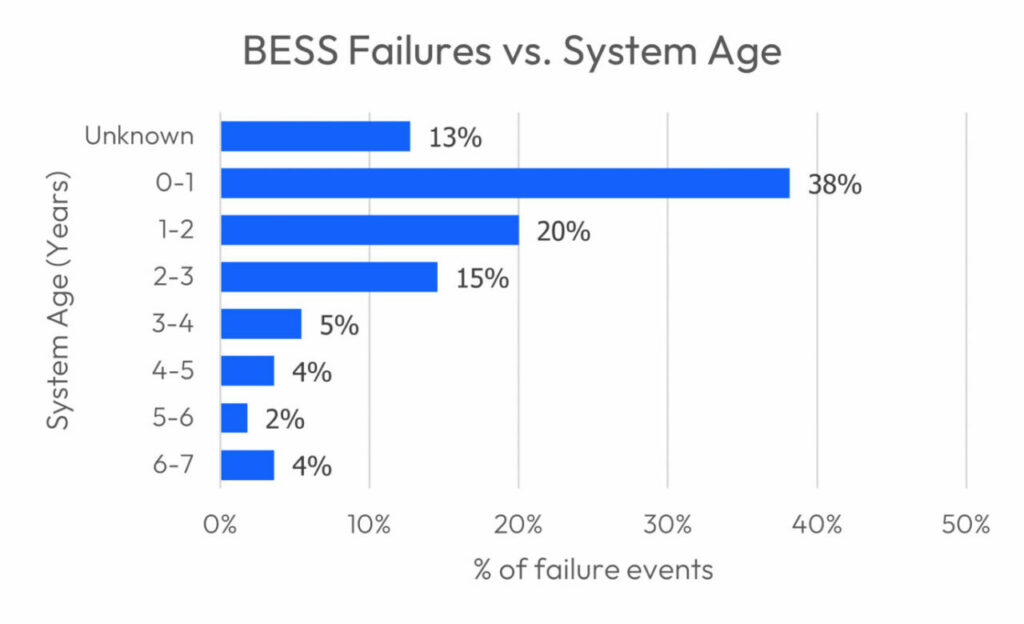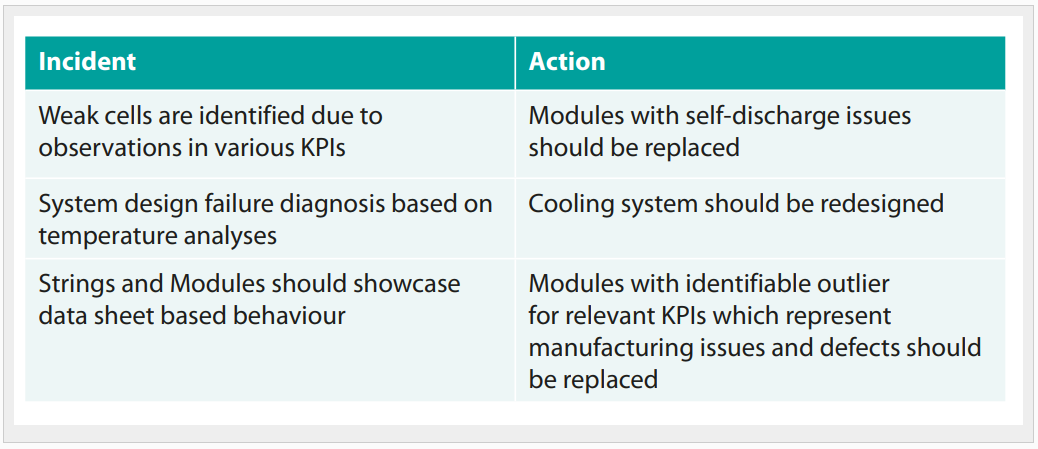Research suggests that 58% of energy storage system failures occur in the first two years of project operation
China Energy Storage News: Researchers from TWAICE, a German battery analysis company, pointed out in their research report that energy storage assets are multi-functional, profitable and low-carbon resources, and they need appropriate conditions and guidance to create value from the start of operation.
They stated that through analysis, the lifecycle prospects of energy storage assets can be understood.
Battery energy storage projects not only have high investment costs, but also have a high risk of failure or unplanned downtime. Research shows that between 2015 and 2022, 58% of energy storage system failures occurred in the first two years of operation. Two thirds of the accidents occurred in the first year shortly after the deployment of the energy storage system.
There are many different reasons for these accidents, from battery out of control, fan problem, cooling system error, inverter failure, Battery management system (BMS) failure, etc. Figure 1 illustrates this point using data from the EPRI battery energy storage system fault event database.

Debugging of energy storage system
Before deploying an energy storage system, there needs to be a "debugging" process to test and verify whether the installation and configuration of the energy storage system and its components are correct.
Once the energy storage project is handed over to the owner after deployment, debugging will begin. Its purpose is also to test the operability of the performance, reliability, and safety of the energy storage system in its initial state. Simply put, it's not just about transferring keys, but also about the responsibilities and risks associated with assets.
The industry standard for debugging reports has not yet been established, but more and more common practices are emerging.
What does debugging usually include
The debugging part of the battery usually includes information such as the capacity, efficiency, and power output of the energy storage system. It also includes detailed information on the problems discovered during the debugging process and the steps taken to address them. In addition, this report will serve as the basis for warranty claims or disputes regarding the status of assets.
However, the traditional tuning methods of energy storage systems also have drawbacks.
A significant drawback of battery storage system debugging reports is that they typically focus on the system level, which is not where most problems occur. Most problems occur at the subcomponent level, such as units, modules, or strings.
The overall performance of the energy storage system is determined by the weakest sub components, so it is crucial to identify modules with poor performance and high risk as early as possible. Identifying and replacing these underperforming subcomponents can significantly improve the efficiency and lifespan of energy storage systems. However, focusing solely on system level debugging reports may not provide detailed information at this level, leading to continued use of underperforming subcomponents and reduced efficiency.
Gain a deeper understanding of the benefits of energy storage system debugging
Compared to on-site debugging, providing deeper insights is crucial for a comprehensive understanding of energy storage systems and identifying more manufacturing, system design, or other issues.
The following are the internal conditions of the energy storage system and three common issues that can be fixed using other KPIs.

In the early stages of the energy storage system's lifespan, successful debugging and identifying potential anomalies are only the first step towards achieving profitable and reliable operation of the energy storage system. After deployment, real-time monitoring and analysis are crucial for ensuring high availability and avoiding security critical events.
Real time analysis, safe and healthy operation
Using security analysis software, not only can potential security events be identified, but they can also be grouped into meaningful technical units so that trends can be detected, and the operations and maintenance (O&M) team can develop plans and take action accordingly.
The temperature or voltage values beyond the boundary may not necessarily be a cause for immediate attention, but accumulation can be a long-term risk. The values that occur outside the safety threshold must be correctly explained and considered in other KPI scenarios. Notification can help identify when unsafe levels have been reached. This is the ideal solution for battery analysis.
More specifically, an important component of battery safety includes detecting anomalies and abnormal trends. For example, deviation from the average distribution of resistance and temperature may indicate side reactions within the battery cell. These are all safety incidents that need to be understood and resolved as soon as possible. Having enough time to fix these anomalies before upgrading will help maintain the high availability of the battery storage system.
Energy Storage Management Systems (ESMS) typically cannot provide sufficient information to ensure the health and safety of energy storage systems. This system does not provide analysis of historical data, therefore it cannot provide necessary data to detect long-term trends or anomalies.
Conclusion
Battery energy storage systems are valuable assets. Although battery energy storage systems have advantages in storing and trading energy, reliable insights are crucial for ensuring the continuous operation and optimal performance of batteries. At the beginning of the energy storage system's lifecycle, it is necessary to debug the energy storage system. However, the main problem with traditional debugging is that it often lacks a detailed understanding of the battery. Digital debugging can provide necessary insights to ensure problem resolution before deployment. This lays the foundation for safety, long lifespan, and high availability.
Digital debugging is a choice to address these challenges. Once the digital debugging of the energy storage system is carried out, a data connection is established, and real-time analysis can complete the digital debugging that has already been initiated.
Author: Liu Boxun Source: China Energy Storage Network
Address:No.15 Xingtai North Road, Hailing District, Taizhou City, Jiangsu Province, China
Hotline:0086-17712702588(Beijing time) 9:00-18:00
E-mail:james.zou@ecexspower.com